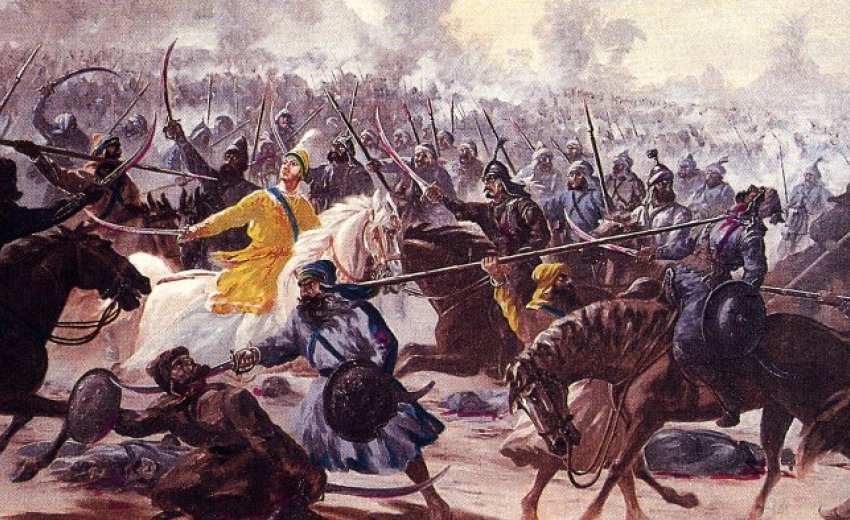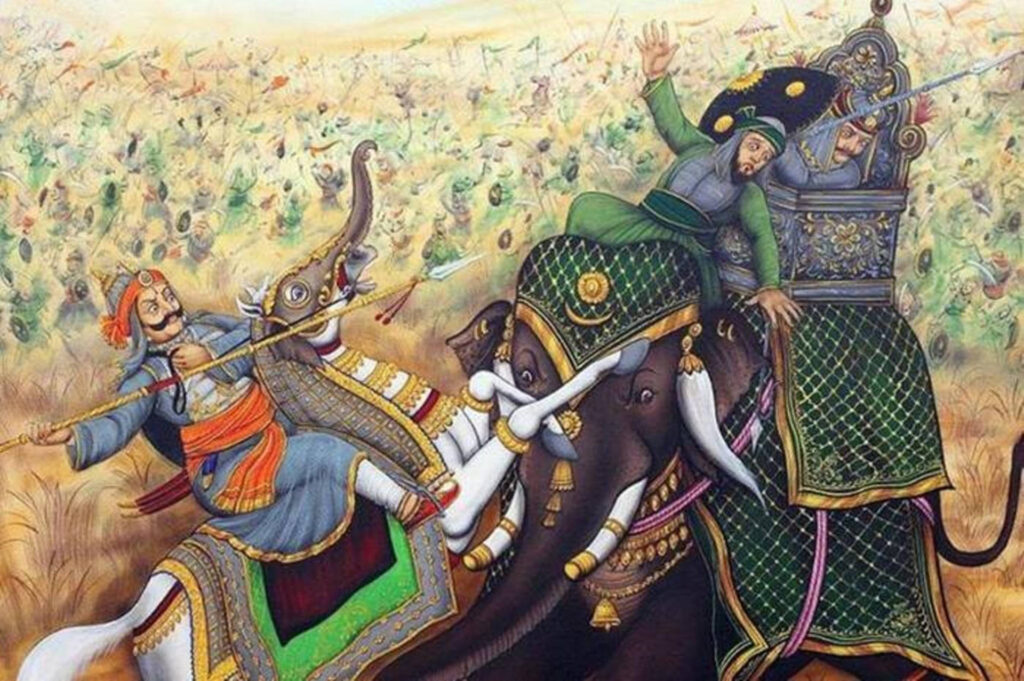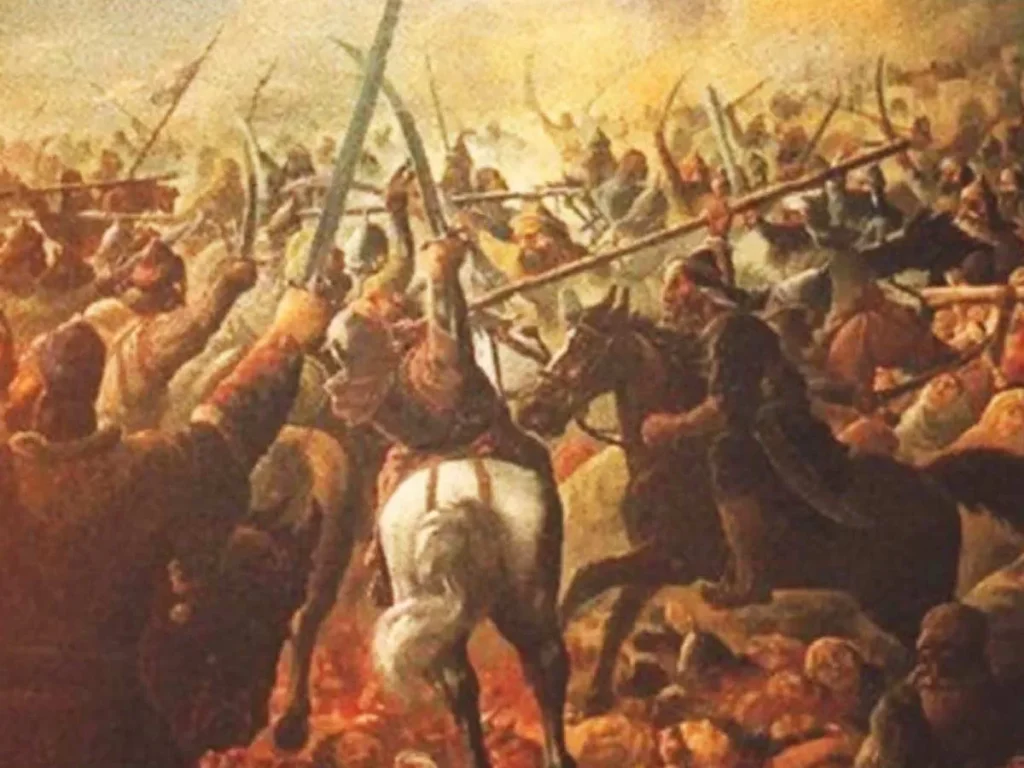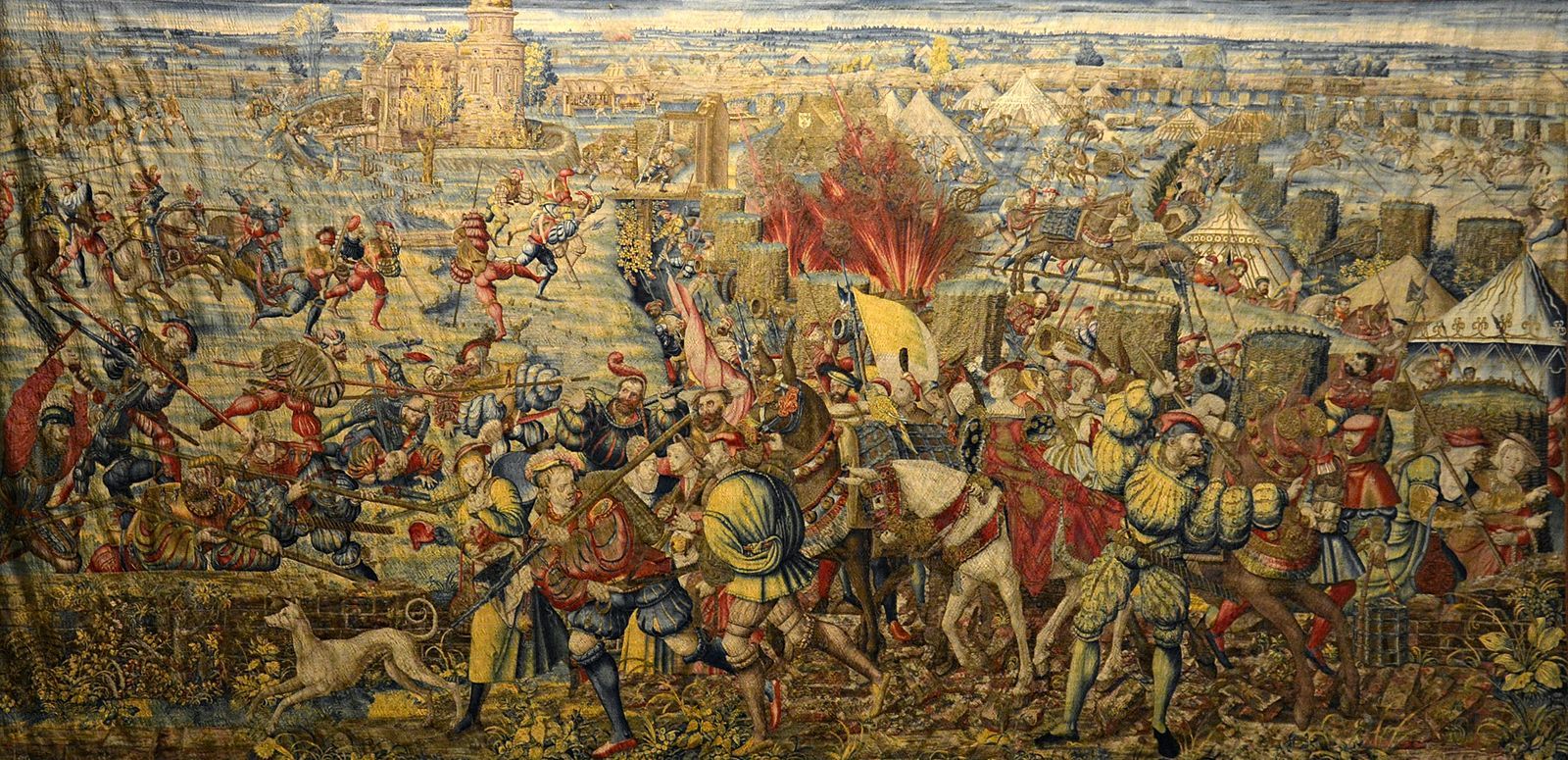The first great battle in Indian history was the Battle of Panipat
The First Battle of Panipat, a historical relic of India, dates back to the 21st of April, 1526. It was the start of the Mughal regime in India. Conflict event happened between the forces of Babur -the founder of the Mughal empire- and Ibrahim Iodi- the Sultan of Delhi. A fight for supremacy took place near Panipat, a town located in nowadays Haryana, and India. This encounter resulted in a complete change of the landscape of politics in the Indian Subcontinent and the Mughal Empire was seen as the most dominant one in the region.

Causes of the Battle
Babur’s Ambitions
Babur, a progeny of Timur and Genghis Khan who was an emigrant, was sharply interested in removing his own rule over the Indian subcontinent after encountering difficulties in Central Asia.
Ibrahim Lodi’s Rule
The reign of Ibrahim Lodi came to a problematic end due to internal conflicts and enemy aggression. These issues undermined the stability of the Delhi Sultanate and offered Babur a chance to build his empire.
Pre-Battle Preparations
Babur’s Military Tactics
Famous for his strategic mind, Babur excellently planned his invasion. He used advanced artillery and decided to have an average range of the army containing infantry, cavalry, and artillery units.
Ibrahim Lodi’s Armies
On the contrary, Ibrahim Lodi’s army was larger but he had none of the personal charisma, cohesion, and discipline that ignited the men under his command’s loyalty since internal rivalries and discontentment among his nobles brought his authority down.

The Battle Unfolds
Deployment of Forces
One of the tactics of Babur was to use the crescent formation of his troops and put the artillery at the best positions that could give the most effective impact. By all means, the armour of Ibrahim Lodi was not as strengthened as it should have been, so he mainly depended on his archers and horsemen in fighting against Babur.
Initial Engagements
The fighting was initiated by both the army’s vanguards and then the battle intensified with reinforcements arriving on both sides and both sides were fighting together.
Turning Points
Central moments, the final defeat of Ibrahim Lodi and Babur’s rise to triumph with Khizr Khan’s elephant were key shifts that sided the decision in Babur’s favour.
Aftermath of the Battle
Babur’s Victory
Babur’s victory in the battle of Panipat made him a winner over the dynasties that were already well-established in the Indian subcontinent and this success created a path for the continuation of his empire.
The decline of the Delhi Sultanate
The ruin of Ibrahim Lodi dealt a terrible blow to the Delhi Sultanate, putting the latter on a downward spiral towards its ruthless deaths.
Historical Significance
Establishment of The Mughal Empire
Panipat-1, which transpired in 1526, was the beginning of what eventually became the Mughal Empire was dominant over the Indian sub-continent practically for hundreds of years.
Influence on the Indian Subcontinent
With this battle result the political landscape in the whole Indian subcontinent was changed. Successful Ahmed Shah was able to unify the area under his rule, which in turn changed the regional history.
Modern Perspectives
Interpretations and Debates
Historians hold different views on the importance and the reasons for the First Panipat Battle as they participate in the interpretation of the event’s outcome.
Cultural Impact
It is the picture of art, literature, and a culture that lives through centuries, being considered brave heroics and toughness.
Conclusion
The Battle of Panipat was and still is regarded as the most significant event in the history of India, as it was the Empire’s beginning and revolutionized everything politically happening in that region. First, the fascinating story of how Babur, together with his successfully forming Mughal Empire, changed the course of Indian history for decades is worth mentioning.

FAQs
What were the determinants of the First Battle of Panipat?
The disagreement concerning the events that led to the First Battle of Panipat is that Babur wanted to establish his rule all over the Indian subcontinent which was prevented by the internal instability in the Delhi Sultanate under the reign of Ibrahim Lodi.
What did Babur’s military approaches lead him to?
The innovative approach of Babur in the military field such as the effective use of artillery, strategic positioning of troops and finally his manoeuvrability on the battlefield were the elements that gave him the necessary victory in Panyipat.
How did the battle bring long-term consequences to the Indian subcontinent?
This fight led to the creation of the Mughal Empire which had an enormous impact on the political, cultural and socio-economical impact of the Indian sub-continent for a long time.
Have historians ever considered the meaning of the First Battle of Panipat?
According to historians, this battle signifies the crucial confluence point in Indian history, when the Mughals started their rule and the end of local powers was inevitable. Along with comparing the consequences of weapons, it also explored the role of military strategy and technology development in decision-making.
What cultural presentations are there of the battle in modern times?
The First Battle of Panipat is naturally embodied in the different types of art forms, literature, and popular culture during the past few centuries to present its timeless value for Indian history and national pride.
Was there any such famous general or hero on both sides during the First Battle of Panipat?
Absolutely, for Babur and in the second place, Ibrahim Lodi is considered to be the principal identity in the battle. Nevertheless, under the banner of Babur, his generals – Khan Zaman and Khan Mewati – were also a force to reckon with whereas on the side of Ibrahim Lodi, his brother, Mahmud Lodi stood as a strong support.
What the role of artillery was in the outcome of that battle?
Among all the factors that led to Babur’s success, the most decisive was probably the artillery which, under the command of his trusted generals, played a crucial role on the battleground. Babur’s advanced and heavy-duty cannons inflicted heavy losses among Ibrahim Lodi’s forces and disrupted their formations, which proved to be very important for the skirmish outcome.
What role did the battleground terrain have on the strategy applied by Babur and Ibrahim Lodi?
The ease with which the soldiers of the Panipat region could move in large formations along this plain had an impact on how both sides deployed their troops and where each cavalry unit was placed. By applying this information, it becomes apparent that the prevalence or lack of aspects like human terrain or mountainous regions also played a part in military strategy in ancient times.
How did the soldiers lose their lives on both sides in the first battle at Panipat?
The actual numbers cannot be specifically determined, but it is somehow certain that no side knew it was just a matter of certain numbers telling the tallies either tens of thousands dead or wounded, or even Ibrahim Lodi himself.
What consequences would have been Babur’s victory at Panipat?
The success at Panipat put Babur at the forefront of being a major player in the region, leading to the rise of new allies and diplomatic declarations across neighbouring states and also helped strengthen his rule in the region.

